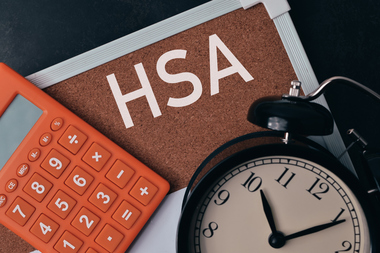The younger generations are feeling anxious about the state of the economy and the rising costs of living, as well as job instability in the tech industry. As a result, they are turning to HSAs to help them stay on track with their financial and savings goals. HSAs are accounts that provide tax benefits to both employers and employees, helping them navigate the rising costs of living and health care expenses while planning for the future.
 Financial stress levels
Financial stress levels
The younger generations are highly stressed about finances. In fact, approximately one-quarter of people aged 18 to 29 have credit card debt that's overdue by 90 days. To attract and retain these employees, companies need to offer competitive financial benefits that enable them to be flexible and save over time.
HSAs, when paired with a qualifying high deductible health plan, offer triple tax advantages, allowing employees and employers to put money into these accounts pretax, spend money on qualified health expenses tax-free and invest in their HSA balance with tax-free growth.
HSAs also offer long-term financial benefits, as the funds in these accounts never expire and belong to the employees. Account holders can use their HSA money tax-free for health-related expenses and anything else that is taxed at the normal rate. This is especially appealing since the average person is expected to spend more than $150,000 on medical expenses, outside what Medicare covers, in retirement.
The popularity of HSAs is rapidly increasing, with the number of accounts rising from six million in 2011 to over 32 million today. In a recent survey, around half of Gen Z and millennial workers who were offered an HSA by their employer were using it to save for future health care costs in retirement, with more than half investing their HSA funds in mutual funds and other types of investments.
With these generations making up 40% of the workforce and Gen Z alone projected to comprise 27% of the workforce by 2025, offering HSAs in your benefits package may appeal to a growing percentage of your employee base.
Do employees know about these?
However, research shows that employees may not be taking full advantage of HSAs due to a lack of education about them. It can be challenging to explain the different applications of HSAs depending on life stage and needs, as well as the tax implications. Therefore, it's important for employers to provide education and resources to their employees regarding HSAs.
There are several benefits of HSAs for employees. First, they can enroll in an HSA at any time during the year, even outside the open enrollment period. The most common use of HSAs is to pay for day-to-day medications, including over-the-counter drugs and other medical expenses, using tax-deductible funds. Another significant advantage of HSAs over 401(k)s is that withdrawals for qualified medical expenses are tax-free.
As employees approach retirement age, HSAs become more attractive. After age 65, HSAs can be used for nonmedical expenses without penalty, although these withdrawals will be taxed at the user's income tax bracket. This flexibility makes HSAs a unique option for employees looking to supplement their retirement income.
HSAs also offer a unique advantage as an additional income reserve for employees to rely on during their retirement. This extra cushion can help extend the financial support for your employees and allow them to cover expenses that they may not have accounted for initially.
To ensure your employees make the most of their HSAs, you should seek a provider with easy-to-use online dashboards and mobile apps, along with a variety of investment options. With self-directed and guided portfolio investing options, you can demonstrate your commitment to helping your employees achieve their life and financial goals.
Providing these tools and resources can help empower employees to take control of their finances and make informed decisions about their financial future.
